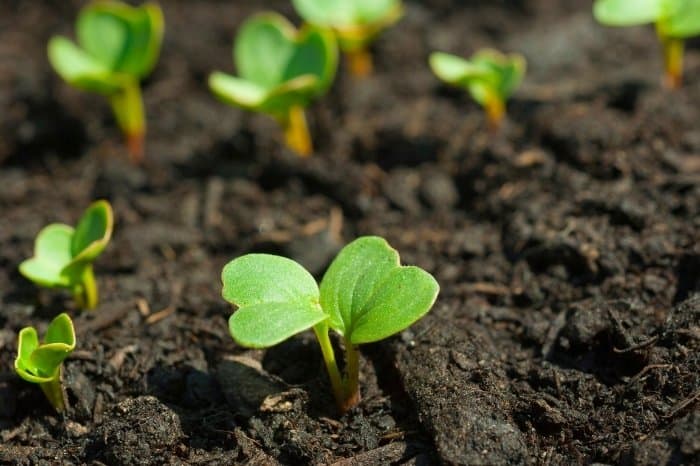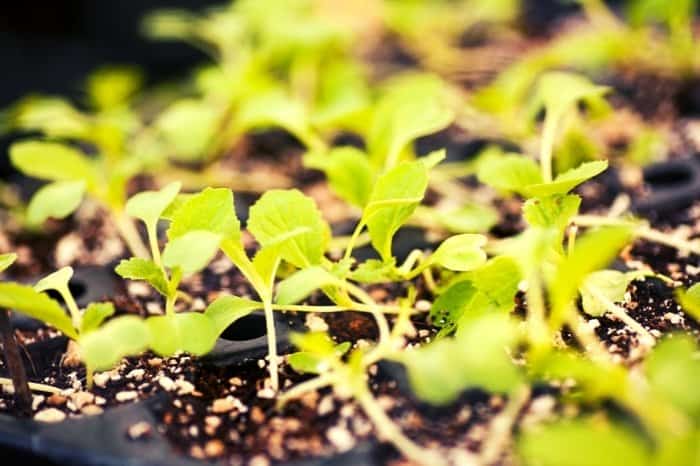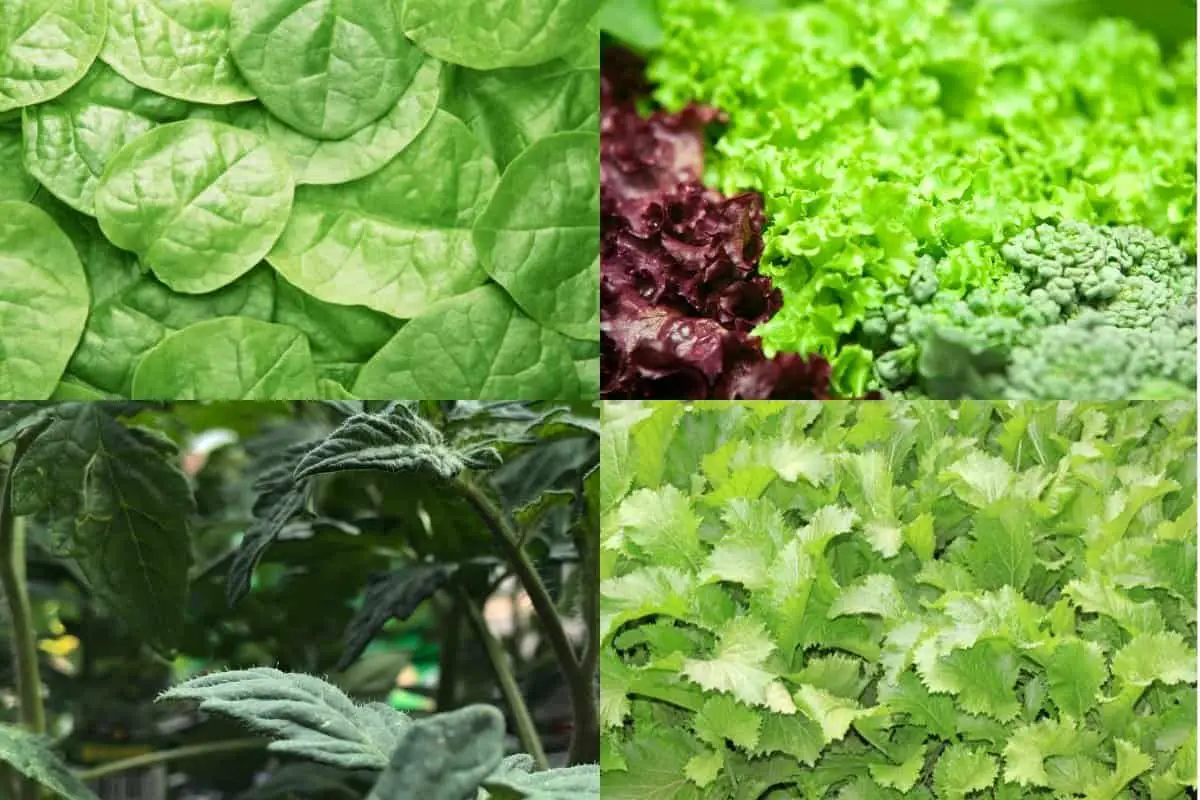Last Updated on January 28, 2022 by
Vegetable identification by leaf is not easy, especially when the plants are young and have only a few leaves in sight.
Are you a new gardener, or are you having difficulties identifying the growing vegetable plants apart from weed or other unwanted plants? Young plants are hard to tell apart from weeds when they are just tiny seedlings. When weeds grow together with the young seedlings, it can be challenging to identify your vegetable from a weed seedling!
If you see a weed in your vegetable garden, the most effective way to eliminate weed is to use a hoe and cut them off in the morning in dry weather, so they don’t come back. But, you cannot do so if the plants have grown a bit more and the leaves are more developed. Otherwise, you could be cutting the very plants you are waiting to grow.
We have prepared a guide to help you identify some common vegetables by looking at their seedlings. So follow us and learn something new.
Vegetable Plant Identification By Leaf
It is possible to identify a vegetable plant by the leaf. The first two leaves of many vegetable seedlings are known as cotyledons (seed leaves). They do not carry the same pattern as the leaves of the mature plant. Instead, these tiny first leaves serve as snacks for the infant plant to consume so that it grows its own true leaves.
So, with the two young leaves, it can be difficult to tell what vegetable it is until the true leaves grow. At the early stage of the cotyledons, it can be difficult to distinguish them from the weeds. We advise you not to try to weed at this stage as you might end up destroying all your young vegetables thinking they are weeds.

After several weeks, the true leaves emerge, and you will be able to spot more differences between the vegetable seedlings as they take on the true shape and the weeds. When the true leaves emerge, the cotyledons will die having served their purpose.
Easy Vegetable Identification By Leaf
With the true leaves now grown, you can start identifying vegetables using several easy methods. These methods include
The Plant Category
Vegetables come in a variety of categories. Some vegetables like broccoli, lettuces, carrots are all cool-season crops. These are planted early in the spring and can’t tolerate heat.
Other crops, like pepper, tomatoes, beans, and corn, are warm-season crops. They grow in the heat of summer until the fall frost kills them.
Vegetables are commonly used for their leaves or fruits. Depending on the vegetable type, you can tell what plant it is by looking at its leaf and knowing its variety.
The Time Of The Year The Vegetable Is Growing
In temperate zones, early crops are planted in late March or early April. This includes leafy greens like lettuce, kale, swiss chard, and spinach. Root vegetables are also grown in this period, including onions, beets, carrots, and radishes. Peas are also planted at this time. Warm-season crops planted in June and July include melons, peppers, tomatoes, and eggplant.
The Leaf Size And Shape
This is another way to identify your vegetable. All the vegetables in the cucurbit family have round large leaves. For example, cucumbers and cantaloupe have leaves that are 3 to 4 inches across.
Pumpkins and squash leaves can grow up to 6 to 10 inches wide. Beans, tomatoes, eggplant, and peppers have leaves that are 2 to 3 inches wide.
Read more about Plant Leaves Turning Brown and Crispy
The Leaf Formation
All leaves have different formations that could help you identify the vegetables with ease. For example, fruit-forming vegetables like peppers, tomatoes, eggplant, and beans provide a central stem like a shrub with lateral branches forming from the main stem.
Root vegetables like potatoes, carrots, beets, and radishes have a few main stems that protrude from the soil with lots of leaves. Chives and onions have tall spear-like leaves that are distinct in shape.
Leaf Supply: A Guide to Keeping Happy House Plants
Climbing vegetables like peas and beans are simple to identify because their leaves are simple. Vegetables grown for greens produce many leaves, but no stems after protruding from the soil.
Use Considerations
If all of the above fails or is difficult, consider the leaves may look different from the actual plant leaves and give them some time to develop. For example, some young vegetable leaves may resemble weeds, but when in doubt, wait for a few more days before pulling them out.
Note: If you are new to this whole gardening idea, you will find it hard to identify your vegetables unless you label them on the part you planted them. But even if you have the label, then it’s tough to identify them once they germinate.
Germination normally happens with the weeds also germinating, just like the seeds you have sown. It can be hard to tell them apart if you have no experience. And even if you have, it can get rather confusing sometimes.

It takes time and exposure before a new gardener can identify the vegetable plants in their early stages. So don’t put yourself under pressure; take the time to do a little research, and soon you will be sure of the identification of most vegetable plants.
And seeking help from fellow gardeners is not a sign of weakness. It just shows you are willing to learn. So get out there and have a happy time with fellow gardeners as you get to learn.
Vegetable Leaf Identifier Conclusion
If you get confused with the help we have shared above; it is important to look up some images online for the young shoots of different plants. If they are too tough to tell apart, you can use a vegetable identifier app that you can download on your phone to identify your vegetables easily.
Technology today has made it easier with just a picture, and you have the correct identification of the plant in question. So now you have no excuse not to identify your vegetables. You have all the help you need, even with technology.
FAQs
How do you identify a leaf from a vegetable?
It’s not that easy. In fact, the same problem can be found when identifying an object on a picture or when trying to spot a leaf in a pile of leaves. This is because the leaf is not just a single object and it can vary in size, shape and color. But you can still get pretty good at identifying plants and vegetables just by knowing a few simple things.
1. If there is one big thing on the plant, it is probably a fruit.
2. A leaf with no stem attached is usually a root.
3. A leaf with a stem is usually a leaf.
4. Vegetables have green parts and fruits have red or yellow parts.
5. Fruits are usually larger than vegetables.
6. Vegetables grow above the ground and fruits grow below the ground.
7. Flowers are also usually for reproduction.
How do I identify a plant?
Plants are easy to identify, but there are some species that are more challenging than others. Here are some tips for identifying plants: What do you see? Identify the general shape of the plant and the flowers, if any. Look at the leaves and compare them with the other plants in your garden.
Do you see the stem? If so, look for bumps on the stem or on the leaf. The buds may be swollen, especially on the tips of branches or leaves.
How do you identify a leaf?
A plant? A bug? Or something else entirely? One of the most basic questions about living things is how to identify them. And yet, for many, it's one of the hardest to answer. "There are some people who can just look at a leaf and say 'That's a rose' or 'That's a maple tree'," says Dr Tim Gower, a botanist at the University of Guelph.
It’s easy, once you know how to look. A "leaf" is usually defined as a node with no incoming edges. The leaves of many plants are shaped like an arrowhead, and the tips point up or down depending on the plant. A few plants have leaves that are shaped like hearts or spades. And some leaves can be found in a variety of shapes. The leaves of many trees and bushes look like they have been cut into strips.
Plants are classified into different categories based on their shape, size and color. Each category is further subdivided into specific types based on their form. In order to understand this classification process, it is necessary to have a clear understanding of the different categories of plants.
What are the 3 types of leaves?
There are three main types of leaves that you can see on the plant. Leaf types are defined by their shape and size, and the way they are attached to the stem.
They are: Foliage leaves - These are leaves that have a blade and a petiole (leaf stalk). They are attached to the stem directly. They are the most common type of leaf and most plants have them.
Flat leaves - Flat leaves are leaves that have no blade or petiole, but have veins running down their length. They are attached to the stem with an attachment point called a stipule.
Paired leaves - Paired leaves are leaves that are divided into two halves. The halves are attached to each other with a joint. This is known as a compound leaf.
Caroline is a gardener who loves to get down to the nitty–gritty of gardening. She proudly proclaims herself as a ‘dirt worshipper‘ and can often be found deep in the garden, covered in soil and singing to her plants. As a self–proclaimed ‘plant whisperer‘, Caroline believes that plants need love and attention just like any other living thing, and she loves to give them both. When she‘s not tending to her garden, you can often find her researching the latest gardening trends, or teaching others how to make their gardens thrive



